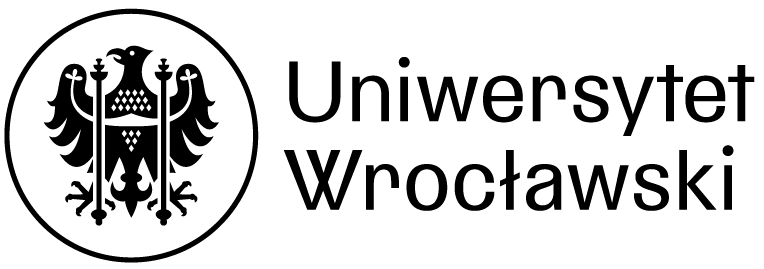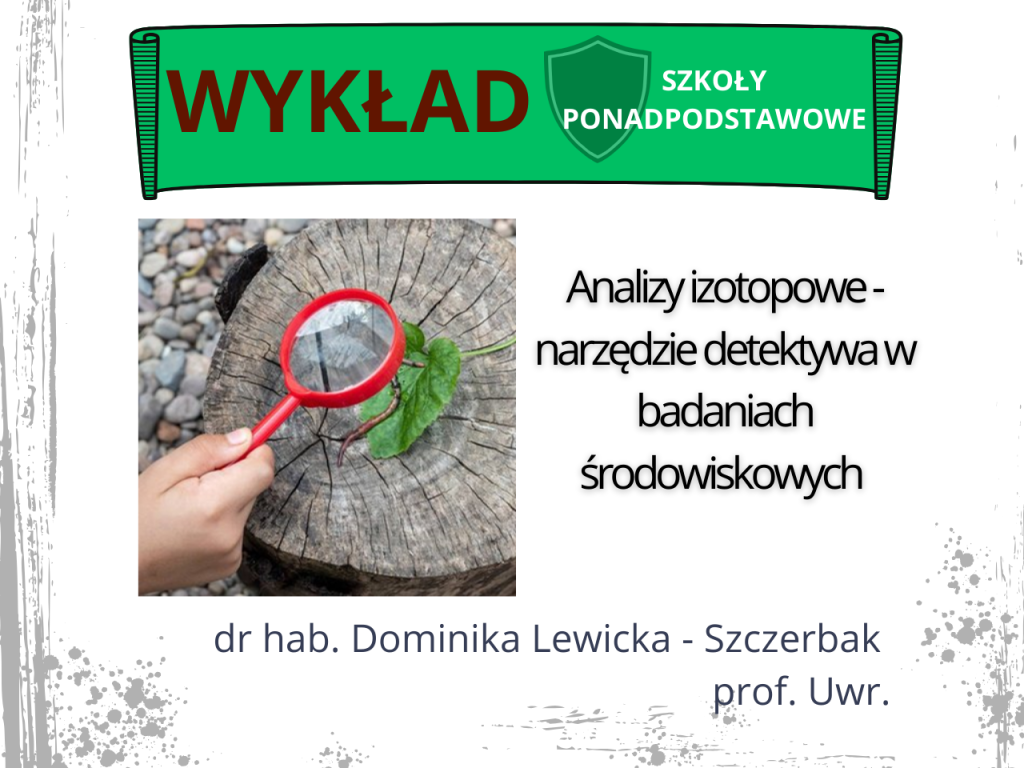| Topic | Hosts | Form of classes | Duration | Level | Contact person | |
| How does the extraction and processing of minerals affect the environment? | Dr. J. Kierczak, Prof. Uwr | lecture | about 30 min | high school | Dr. hab. Magdalena Matusiak-Małek | magdalena.matusiak-malek/at/uwr.edu.pl |
| Are we living in a new geological epoch – the Anthropocene? | Dr. J. Kierczak, Prof. Uwr | lecture | about 30 min | high school | Dr. hab. Magdalena Matusiak-Małek | magdalena.matusiak-malek/at/uwr.edu.pl |
| How rocks are formed | TDepartment of Experimental Petrology Team | workshop | about 30 min | high school | Dr. hab. Magdalena Matusiak-Małek | magdalena.matusiak-malek/at/uwr.edu.pl |
| Macro, micro and nano scale rocks | TDepartment of Experimental Petrology Team | workshop | about 30 min | high school | Dr. hab. Magdalena Matusiak-Małek | magdalena.matusiak-malek/at/uwr.edu.pl |
| Magmatic rocks in a nutshell | TDepartment of Experimental Petrology Team | workshop+lecture | about 30 min | high school | Dr. hab. Magdalena Matusiak-Małek | magdalena.matusiak-malek/at/uwr.edu.pl |
| Sedimentary rocks in a nutshell | TDepartment of Experimental Petrology Team | workshop+lecture | about 30 min | high school | Dr. hab. Magdalena Matusiak-Małek | magdalena.matusiak-malek/at/uwr.edu.pl |
| Metamorphic rocks in a nutshell | TDepartment of Experimental Petrology Team | workshop+lecture | about 30 min | high school | Dr. hab. Magdalena Matusiak-Małek | magdalena.matusiak-malek/at/uwr.edu.pl |
| Silesian building stones in the architecture of Wrocław | Dr. Wojciech Bartz | workshop+lecture | about 30 min | high school | Dr. hab. Magdalena Matusiak-Małek | magdalena.matusiak-malek/at/uwr.edu.pl |
| Bacteria in a different guise, or the influence of microorganisms on the transformation of geological materials | Dr. Anna Potysz | lecture | about 30 min | high school | Dr. hab. Magdalena Matusiak-Małek | magdalena.matusiak-malek/at/uwr.edu.pl |
| Waste or raw material – chemical and biological methods used in the recovery of valuable components | Dr. Anna Potysz | lecture | about 30 min | high school | Dr. hab. Magdalena Matusiak-Małek | magdalena.matusiak-malek/at/uwr.edu.pl |
| Natural processes and their reproduction under experimental (laboratory) conditions | Dr. Anna Potysz | workshop+lecture | about 30 min | high school | Dr. hab. Magdalena Matusiak-Małek | magdalena.matusiak-malek/at/uwr.edu.pl |
| Waste in everyday life: generation, consequences and counteraction | Dr. Anna Potysz | lecture | about 30 min | high school | Dr. hab. Magdalena Matusiak-Małek | magdalena.matusiak-malek/at/uwr.edu.pl |
| Environmental pollution: current status and projections | Dr. Anna Potysz | lecture | about 30 min | high school | Dr. hab. Magdalena Matusiak-Małek | magdalena.matusiak-malek/at/uwr.edu.pl |
| What the glaciers brought, or fossils from the Baltic region and Scandinavia in Lower Silesia. | Dr. Alina Chrząstek | lecture | about 30 min | high school | Dr. hab. Magdalena Matusiak-Małek | magdalena.matusiak-malek/at/uwr.edu.pl |
| Mesozoic fossils of the Sudetes. | Dr. Alina Chrząstek | lecture | about 30 min | high school | Dr. hab. Magdalena Matusiak-Małek | magdalena.matusiak-malek/at/uwr.edu.pl |
| The Tragedy of the Aral Sea. A lesson in which we tell what human arrogance leads to, why one should not tamper with nature and whether wars over water are our future. | Dr. Magdalena Modelska | lecture | about 30 min | high school | Dr. hab. Magdalena Matusiak-Małek | magdalena.matusiak-malek/at/uwr.edu.pl |
| Mysteries of Northern Mexico – Barranca del Cobre and Cuatro Cieniegas. A lesson where we will talk about where we can see canyons deeper than those in Colorado, where stromatolites form today, and where the sand does not gnash in our teeth and is snow-white like on Mars. | Dr. Magdalena Modelska | lecture | about 30 min | high school | Dr. hab. Magdalena Matusiak-Małek | magdalena.matusiak-malek/at/uwr.edu.pl |
| Fossils – traces of ancient life and | Dr. Robert Niedzwiedzki | lecture | about 30 min | high school | Dr. hab. Magdalena Matusiak-Małek | magdalena.matusiak-malek/at/uwr.edu.pl |
| indicators of the natural environment of past epochs. | Dr. Robert Niedzwiedzki | lecture | about 30 min | high school | Dr. hab. Magdalena Matusiak-Małek | magdalena.matusiak-malek/at/uwr.edu.pl |
| The fascinating world of the Mesozoic – the era of the dinosaurs. | Dr. Robert Niedzwiedzki | lecture | about 30 min | high school | Dr. hab. Magdalena Matusiak-Małek | magdalena.matusiak-malek/at/uwr.edu.pl |
| How did man come into existence? On the evolution of our kind. | Dr. Robert Niedzwiedzki | lecture | about 30 min | high school | Dr. hab. Magdalena Matusiak-Małek | magdalena.matusiak-malek/at/uwr.edu.pl |
| Climate carousel of glaciations and greenhouse effects, or the climate of the last 700 million years. | Dr. Robert Niedzwiedzki | lecture | about 30 min | high school | Dr. hab. Magdalena Matusiak-Małek | magdalena.matusiak-malek/at/uwr.edu.pl |
| The geological structure of Poland with special emphasis on Lower Silesia. | Dr. Paweł Raczyński | lecture | about 30 min | high school | Dr. hab. Magdalena Matusiak-Małek | magdalena.matusiak-malek/at/uwr.edu.pl |
| Not only dinosaurs – past life in the area of today’s Lower Silesia. | Dr. Paweł Raczyński | lecture | about 30 min | high school | Dr. hab. Magdalena Matusiak-Małek | magdalena.matusiak-malek/at/uwr.edu.pl |
| Life in the “copper sea” – the formation of the rocks of the Lower Silesian copper basin. | Dr. Paweł Raczyński | lecture | about 30 min | high school | Dr. hab. Magdalena Matusiak-Małek | magdalena.matusiak-malek/at/uwr.edu.pl |
| 3.5 billion years of Earth’s history recorded in rocks in the Kaczawa Valley. | Dr. Paweł Raczyński | lecture | about 30 min | high school | Dr. hab. Magdalena Matusiak-Małek | magdalena.matusiak-malek/at/uwr.edu.pl |
| The mineral resources of Lower Silesia. | Dr. Paweł Raczyński | lecture | about 30 min | high school | Dr. hab. Magdalena Matusiak-Małek | magdalena.matusiak-malek/at/uwr.edu.pl |
| How erosion works and what causes it? | Dr. Elżbieta Słodczyk | lecture | about 30 min | high school | Dr. hab. Magdalena Matusiak-Małek | magdalena.matusiak-malek/at/uwr.edu.pl |
| Glaciers and their importance in shaping landscape | Dr. Elżbieta Słodczyk | lecture | about 30 min | high school | Dr. hab. Magdalena Matusiak-Małek | magdalena.matusiak-malek/at/uwr.edu.pl |


